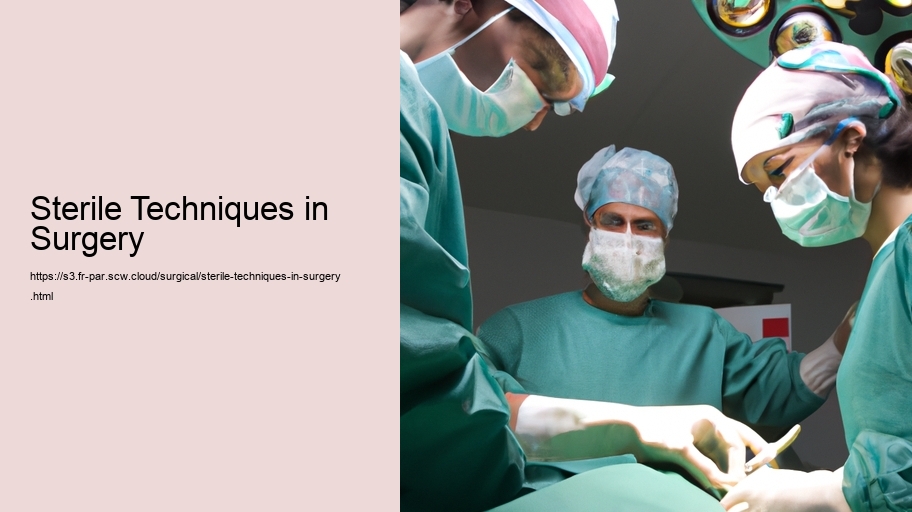Sterile techniques in surgery are a set of procedures and practices designed to maintain asepsis, which is the absence of pathogenic microorganisms that can cause infection. These techniques are crucial in preventing surgical site infections (SSIs), which can lead to prolonged hospital stays, additional surgical procedures, increased healthcare costs, and, in severe cases, significant morbidity or mortality. The adoption of sterile techniques is a fundamental component of surgical practice and is critical for patient safety.
The cornerstone of sterile technique is the surgical aseptic practice, which includes the sterilization of instruments, the use of sterile gloves and gowns by the surgical team, and the creation of a sterile field. Sterilization of instruments is achieved through various methods, such as autoclaving (using high-pressure steam), dry heat, or chemical sterilants. These procedures ensure that all potential contaminants are eradicated before instruments come into contact with the surgical site.
Sterile gloves and gowns are another essential aspect of sterile technique. Surgical team members don sterile gloves and gowns before encountering any sterile surfaces or equipment to prevent the transfer of microorganisms from the skin or clothing. The integrity of gloves and gowns is critical; even a small perforation can compromise sterility. As such, team members must be vigilant about checking for any breaches and replacing any compromised items immediately.
The sterile field is an area created around the location where the surgical procedure will take place. This field is established by draping the patient with sterile drapes, which are carefully unfolded in a manner that prevents contamination. The sterile field extends to include any tables or surfaces where sterile instruments will be placed. Only sterile items are allowed within this field, and once an item leaves the field or comes into contact with a non-sterile object, it is considered contaminated and must not be returned to the sterile environment.
Hand hygiene is another critical aspect of sterile technique. Surgical team members must perform a thorough hand and forearm scrub before donning sterile gloves. This scrub, often performed with antiseptic solutions, reduces the microbial count on the skin and minimizes the risk of introducing pathogens into the surgical site.
Maintaining sterile technique also involves strict adherence to specific behaviors in the operating room (OR). Movement within the OR should be minimized to reduce air currents that could carry microorganisms. Conversations should be limited as talking can release droplets that may contaminate the sterile field. Surgical team members are trained to be mindful of their movements and interactions to ensure the integrity of the sterile environment is maintained throughout the procedure.
In addition to these techniques, the use of sterile barriers and equipment covers, such as plastic sheaths for non-sterile equipment that must enter the sterile field, is standard practice. The use of technologies such as laminar airflow systems, which remove airborne contaminants, and ultraviolet light can also contribute to a sterile environment.
Sterile techniques in surgery are not static and have evolved over time in response to new research, the development of new materials and equipment, and the emergence of new pathogens. Continual education and training for surgical teams are imperative to stay current with the latest best practices and innovations in sterile technique.
In conclusion, sterile techniques in surgery are a complex set of practices that require meticulous attention to detail and discipline from the entire surgical team. These techniques are essential in protecting patients from infections and ensuring the best possible surgical outcomes. The commitment to maintaining a sterile environment is a testament to the dedication and professionalism of those working within the surgical field and is a fundamental principle of modern surgery.
